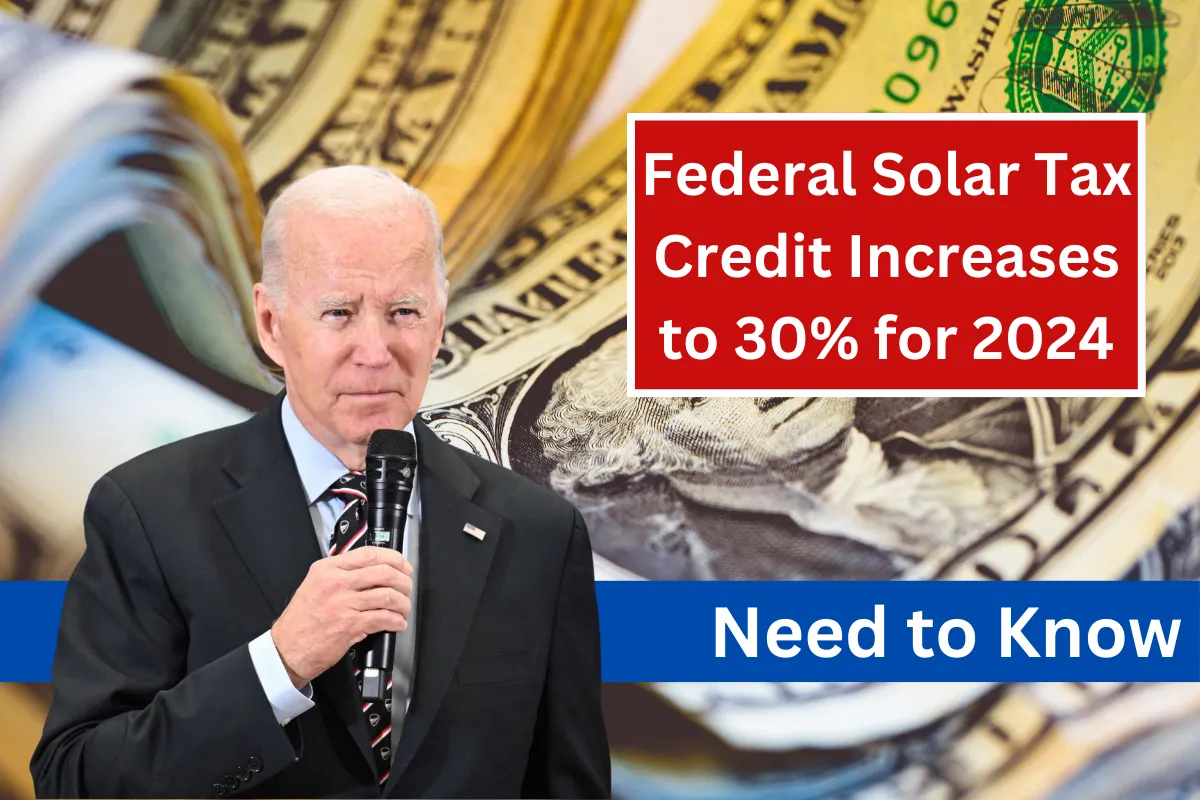Are you thinking about installing solar panels at home? The federal government offers a great incentive called the Federal Solar Tax Credit to help you save on installation costs. For 2024, you can get a 30% tax credit with no upper limit, making it an excellent opportunity to switch to solar energy. Here’s everything you need to know about this benefit.
What is the Federal Solar Tax Credit?
The Federal Solar Tax Credit, also known as the Investment Tax Credit (ITC), allows you to claim a significant portion of your solar system’s cost as a credit on your federal taxes. For 2024, this credit is 30% of the cost of your solar panel system. This means if you spend $20,000 on solar panels, you could reduce your tax bill by $6,000.
Eligibility for the 30% Tax Credit
To qualify for the 30% Federal Tax Credit in 2024, you need to meet these requirements:
- Ownership: You must own the solar energy system. If you lease the system or use a power purchase agreement (PPA), you are not eligible for this credit.
- Tax Liability: You need to have a tax bill to use the credit. If your tax bill isn’t high enough to claim the full credit in one year, you can carry over the remaining amount to future years until 2033.
- Installation and Operation: Your solar system must be installed and operational in the same year you claim the credit. For example, if installed in December 2023 and operational in January 2024, you should claim the credit in 2024.
Benefits of the Federal Solar Tax Credit
The 30% Federal Tax Credit provides substantial savings. Here’s how it benefits you:
- Significant Savings: A $20,000 solar system could save you $6,000 on your taxes.
- Increased Savings: On average, people save more than $6,150 on their solar expenses thanks to this credit.
- Long-Term Benefits: The credit is available at 30% until 2033. After that, it will decrease to 26%.
How to Apply for the Tax Credit
To apply for the Federal Solar Tax Credit, follow these steps:
- Download IRS Form 5695: This form is needed for your tax return and can be found on the IRS website.
- Calculate Your Expenses: Enter your solar system costs as “Qualified solar electric property costs” in Section 1 of the form.
- Complete the Form: Fill out lines 6a and 6b according to the instructions.
- Check Limits: Use the Residential Energy Efficient Property Credit Limit Worksheet from the IRS to determine any limits on your tax liability.
- Finalize Credit: Complete lines 15 and 16 to finalize your credit amount and enter it on line 5 of your Schedule 3.
Local and State Incentives
Besides the federal tax credit, many states and local governments offer additional incentives for solar energy. These can include:
- Rebates: Cash back on your solar installation costs.
- State Tax Credits: Additional credits on your state taxes.
- Other Incentives: Financial assistance from local programs.
Check with your state energy office or local utility company to find out what’s available in your area.
Future Outlook
The Federal Solar Tax Credit was initially set to expire in 2022 but has been extended to 2033 under the Inflation Reduction Act. After 2033, the credit percentage will drop to 26%. So, the sooner you invest in solar energy, the more you can save.
Investing in solar energy is a smart choice for homeowners looking to reduce their environmental impact and save money. The 30% Federal Solar Tax Credit in 2024 offers a significant financial incentive, making now a great time to switch to solar power.
1. What is the Federal Solar Tax Credit for 2024?
The Federal Solar Tax Credit for 2024 is 30% of the cost of installing solar panels, which can directly reduce your tax bill.
2. Who is eligible for the 30% Federal Solar Tax Credit?
To qualify, you must own the solar system, have a tax liability, and ensure the system is operational in the year you claim the credit.
3. How do I apply for the Federal Solar Tax Credit?
Download IRS Form 5695, calculate your solar expenses, complete the form, and submit it with your tax return.
4. Are there any additional incentives for solar energy?
Yes, many states and local governments offer rebates, additional tax credits, and other financial assistance. Check with local authorities for details.
5. How long is the Federal Solar Tax Credit available?
The 30% tax credit is available until 2033. After that, it will decrease to 26%.












